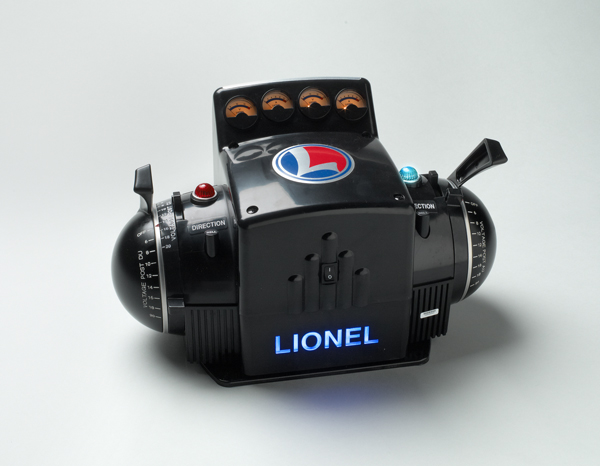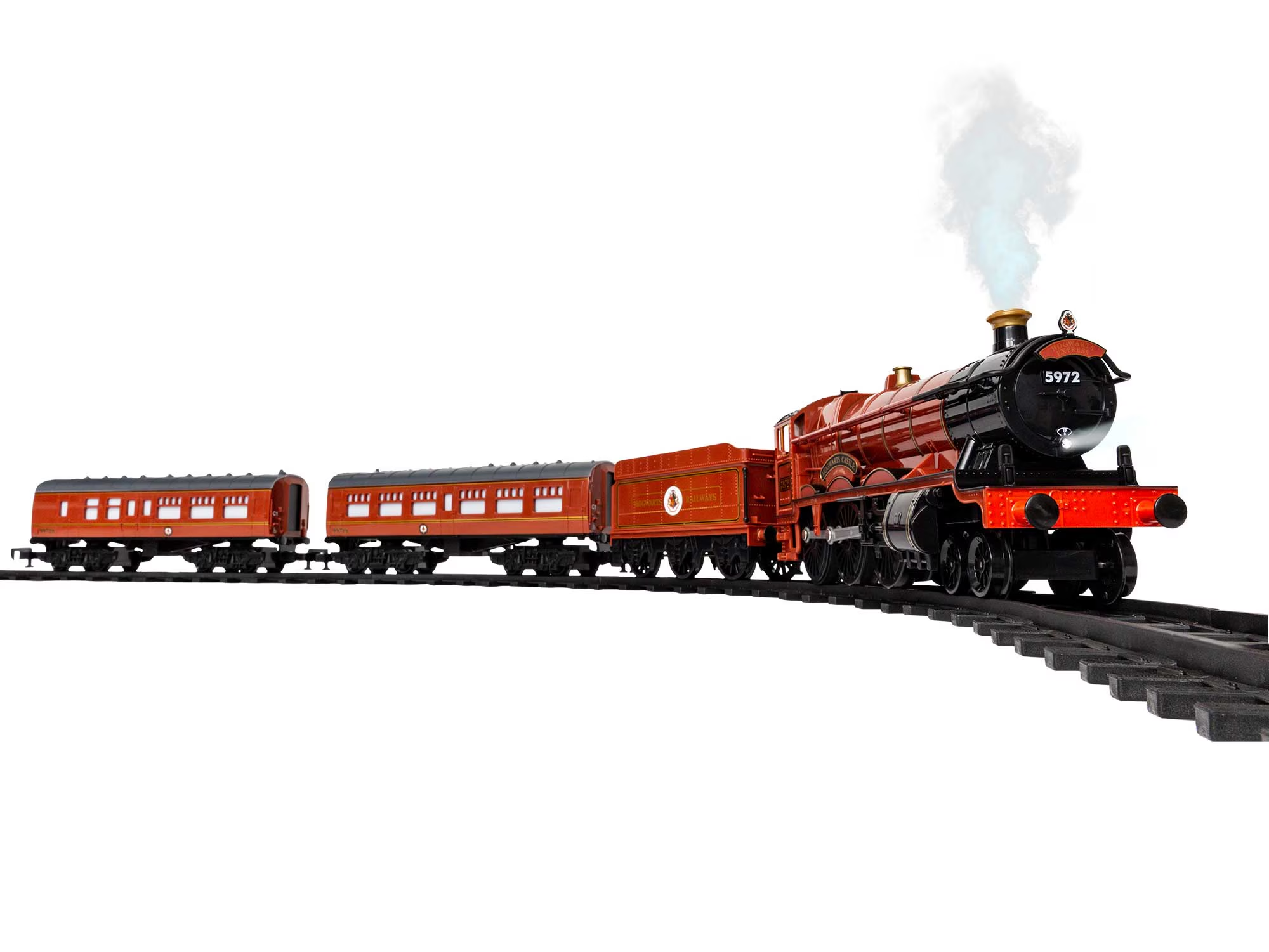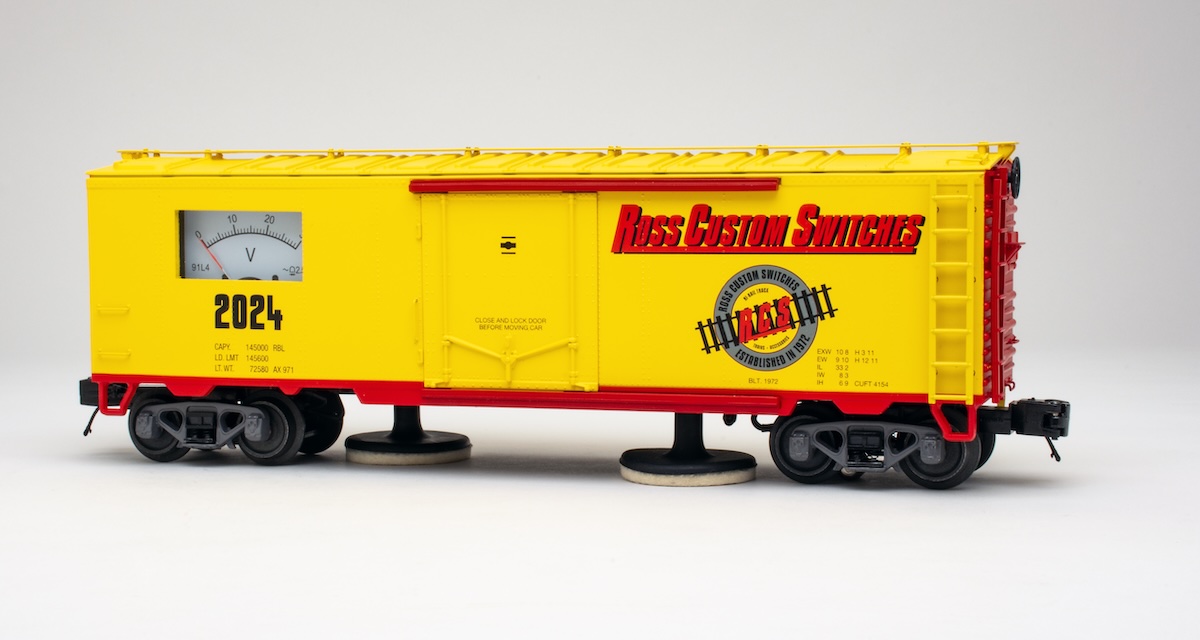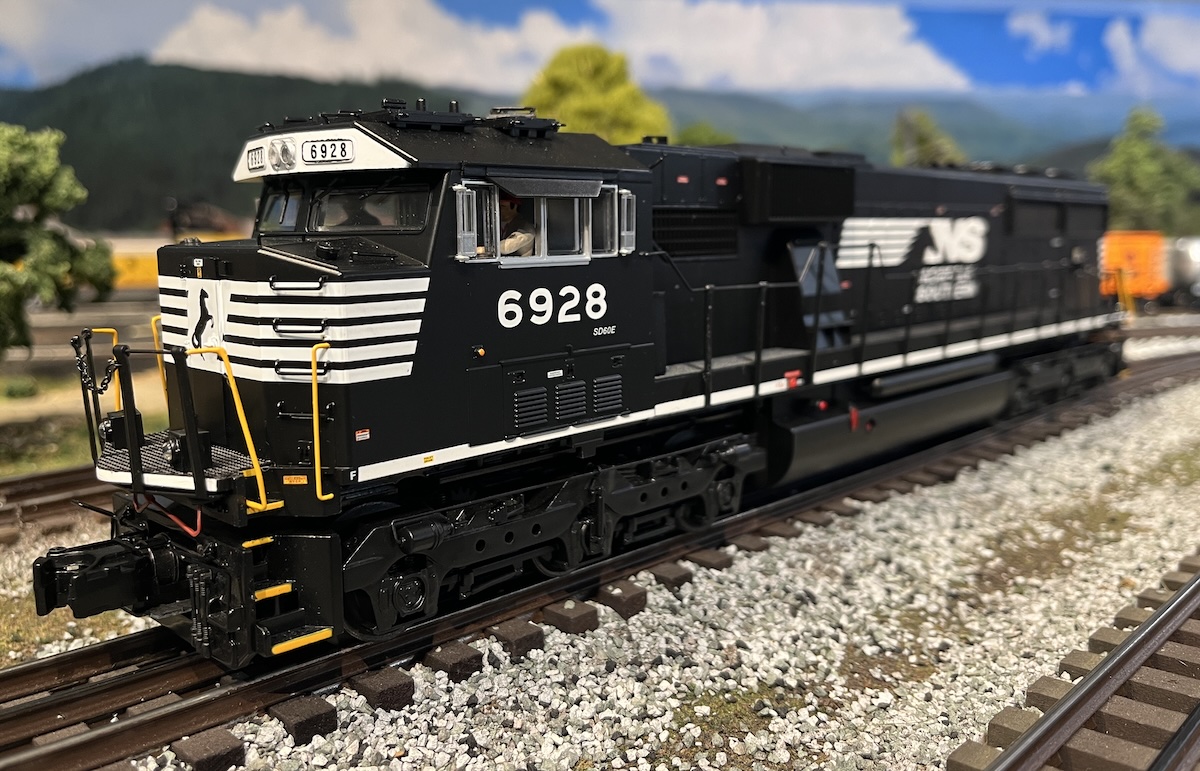The boxy middle, curved ends, and upright handles were captured in MTH’s no. 40-4000 Z-4000 400-watt transformer (1998). This imagery was also the basis of the control box for Lionel’s no. 32930 ZW which used four power bricks (2001). Lionel’s designers have upgraded the transformer package while returning the power system into the football-style case. The results are the ZW-L.
After I did a first-look video, it became clear that some hobbyists have the idea that this transformer is some sort of Legacy system component. Rest assured that if you run only old school, conventional trains, this power supply will be right at home. If you run Lionel’s TrainMaster or Legacy systems, there are some very nice aspects to this rig.
What it does
The ZW-L can power up to four track circuits individually, using two large handles and two smaller nubs. Or it can operate one line divided into power blocks for each output. Each line can utilize up to 180 watts, but the transformer’s output is limited to a total of 620 watts across all four outputs.
Front controls
As far as train control goes, everything you have on a 65-year-old ZW you have on the ZW-L. You have four throttles, two whistle, and two bell controls. The throttles are engraved with the approximate power output – just like the vintage power supply. There are three major cosmetic changes, and let me be clear – by cosmetic, I don’t mean trivial.
First, there is a power on/off switch in the middle of the face. Gone are the days of yanking a plug out or fumbling with a power strip to turn the transformer off.
Next is an illuminated “Lionel” just below the power strip. The blue light gives a nifty deco-style design element to the ZW-L, but it is also functional. If you are operating in command mode, it will flash to remind you to set an ID number, or it will flicker to indicate a weak or non-existent command signal.
But the crown, both figurative and actual, is the pair of volt and amp meters. The default has the right meter reading output A-U and the left meter covering D-U. These are the large throttle positions. But these meters do double duty.
Touch the inner throttles (the smaller nubs), and the reading changes to reflect B-U (right control) and C-U (left control). The changed setting remains as long as you have contact with the control. How will you know which channel is being used? The back lighting of the meter will be brighter when viewing B-U or C-U.
Let me note that lines A-U and D-U are designed for train operation, while B-U and C-U are intended for accessories. You can, however, operate trains with B and C up to the power limit you have available.
In command mode, you can change the meters either by touch or addressing the line in question with your CAB remote.
Rear features
The arrangement of the rear of the transformer is just as novel as the front. This has traditional binding posts for lines A-U, B-U, C-U, and D-U. But you also have an individual external circuit breaker for each output.
You’ll find three switches in the middle, just above the binding posts. On the left, a run/program switch for programming equipment in TMCC or Legacy modes.
The middle is a switch for selecting between conventional control or command for use with a TMCC or Legacy command base and CAB remote.
On the right is the one channel/four channel switch. To operate all four outputs with one control (throttle A), select 1 channel; to operate four lines with four throttle controls, select 4 channel. Please note that you need to make a selection between 1 channel and 4 channel before you power up.
If you change it after powering up, it will not recognize the change. Simply turn the ZW-L off, flip the channel switch, and power back up. I suspect most operators will select the option that’s best for them and leave it that way.
There is also an internal variable-speed cooling fan – essential for keeping this beefy transformer’s temperature under control during heavy operations.
Last but not least, is a binding post for attaching a command base. Adding a dedicated connection is essential for enabling the transformer to receive signals from Legacy or TMCC command bases.
How power is distributed
The maximum sustained power output per channel is 180 watts or 10 amps. However, that does not mean all four channels can simultaneously deliver 180 watts each. There is a 620-watt maximum output, and power shifts to where it’s needed.
So if you were running 180 watts on line A, B, and C; the maximum amount of power available for line D would be 80 watts. Lionel calls this “Dynamic Power Sharing.” The word “Dynamic” enters the mix because power output can instantly shift across all four channels based on moment-by-moment demand.
How do you know when you’ve reached the limit? Easy, the red light flashes. A cool feature is that it will continue to flash – letting you know you are at the safe operating limit – but you can keep running trains because this doesn’t trip the breaker. Why? Because there hasn’t been an overload, you’ve just reached the maximum capacity.
The red light remaining on is a problem indicator. If, say, a train derails and there is a surge, the system briefly hold output at 10 amps, and if in 3 seconds it isn’t corrected, the breaker for the track concerned is tripped. The remaining lines continue to function and a steady red light tells you a breaker has tripped.
Capability-flexibility
This is a solid transformer for conventional operation. You need not operate any command system with this other than the hands-on-throttles. That being noted, you can increase your ease of operation of a complex layout using the Legacy system.
You can program the transformer with either a track or engine number. This will probably be best utilized with multiple ZW-Ls used on a large jumbo-tronic layout with many blocks.
If, for example, you have two ZW-Ls, you can assign track numbers 1 through eight and operate eight blocks with a single handheld control unit.
At this point, let me note that two Legacy modules are included with this transformer. They are Legacy version 1.4 modules for the CAB-2 and command base.
You’ll need to assign a device type and a control type if you’re using an engine ID number. If you are using a track number, you need select only a control type.
If your Legacy is using the 1.4 update, you may select CAB-1, TMCC, or Legacy modes. For Legacy systems with 1.3 or lower, select CAB-1. Lionel cryptically advises that using TMCC or Legacy control modes with Version 1.3 or lower will “result in unexpected operation.”
The main impact on operating in CAB-1, TMCC, or Legacy modes involves the speed steps – or speed increments – that a locomotive can use with the L, M, or H settings. With the CAB-1 mode, the available speed steps are 32, 100, or 200. In TMCC mode, 32 are available. In Legacy mode, 200 speed steps are available. Think of the ZW-L as a means to enhanced running with the Legacy system.
Hands on
My favorite feature of Lionel’s original TrainMaster system (using the original power bricks with their pulsed power) was how it slowed down vintage trains when operating in the conventional mode.
Going around the CTT offices, I rounded up nine recent conventional locomotives and motorized units and gave them a low-speed test. With some the difference was dramatic, others not so much. As they say, your mileage may vary.
As a descendant of Lionel’s ZW, it was no surprise to find that four-track control in conventional mode is exceptionally easy. Move the appropriate throttle or press the whistle/horn or bell controls, and things happen. The machine does all the work and looks good doing it.
If you don’t already possess a Lionel Legacy system (CAB-2 and command base) or a TrainMaster (CAB-1 and command base), you will need one before entering command operations.
The ZW-L transformer has much to offer operators whether they are conventional runners or command operators. It takes the most evocative packaging (the classic ZW “football” shape) and combines it with a modern power supply that you can utilize right out of the box. Add the Legacy command base, and you can control four tracks with a single device in your hand.
Features: 620-watt maximum output, four track operation, volt/amp meters, Legacy/TMCC command-ready, self-contained single-unit power supply















Such an exciting launch of a new product. I have a question pertaining to the "pulsed control". Bob eluded to it with his statement. (My favorite feature of Lionel’s original Train Master system (using the original power bricks with their pulsed power) was how it slowed down vintage trains when operating in the conventional mode.) Does the new ZW-L use a pulsed sign wave commonly known as a chopped wave pattern? The "bricks" as Bob mentioned create a pure sign wave not a pulsed wave. The Post War Celebration ZW took that brick power and modified it into a pulsed sign wave. I agree that it makes the pullmor motors work great, but from my experience it ruins any operation of MTH DCS and is not compatible. Say it isn't so Bob!
The article was good but the video was even better. It shows why the railroads, even in today's high-tech world, made a huge mistake trying to save money by getting rid of the caboose. Obviously,neither the engineer or the fireman could see the diesel approaching from the rear because of the highth of the tender. Had that engine had a caboose, the rear brakeman could have radioed the engineer of the diesel to slow down, or if unable to make radio contact, could have stood on the rear deck of the caboose and relayed a hand signal to the engineer of the approaching locomotive that he was #1. Who was that engineer anyway?